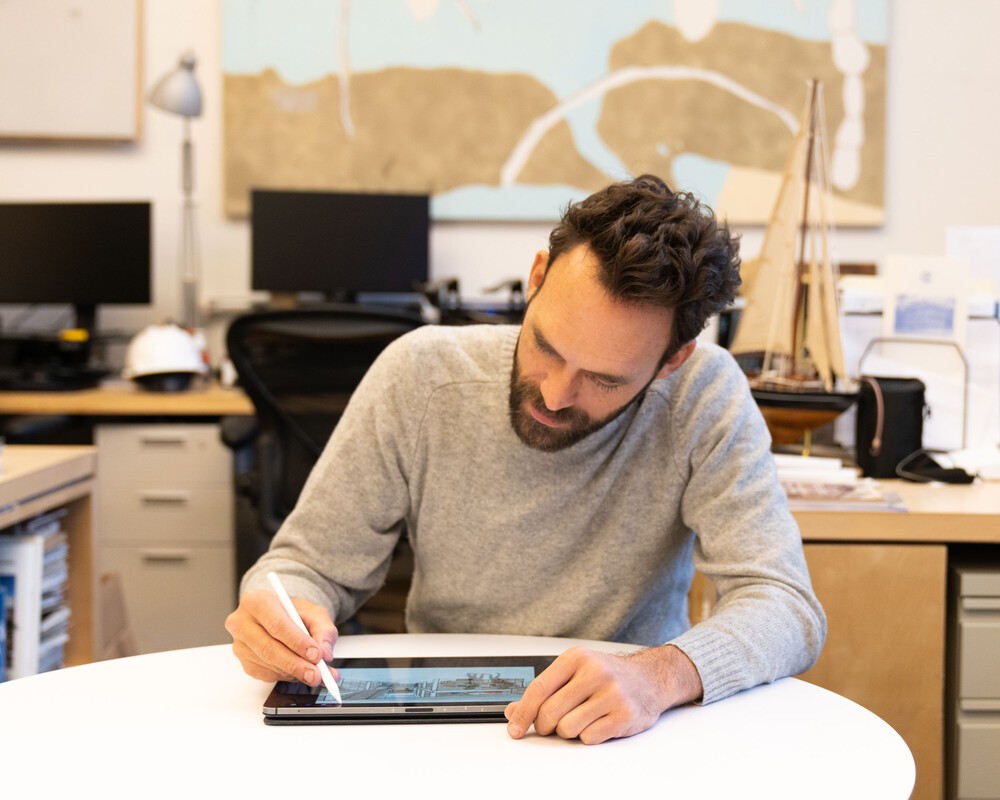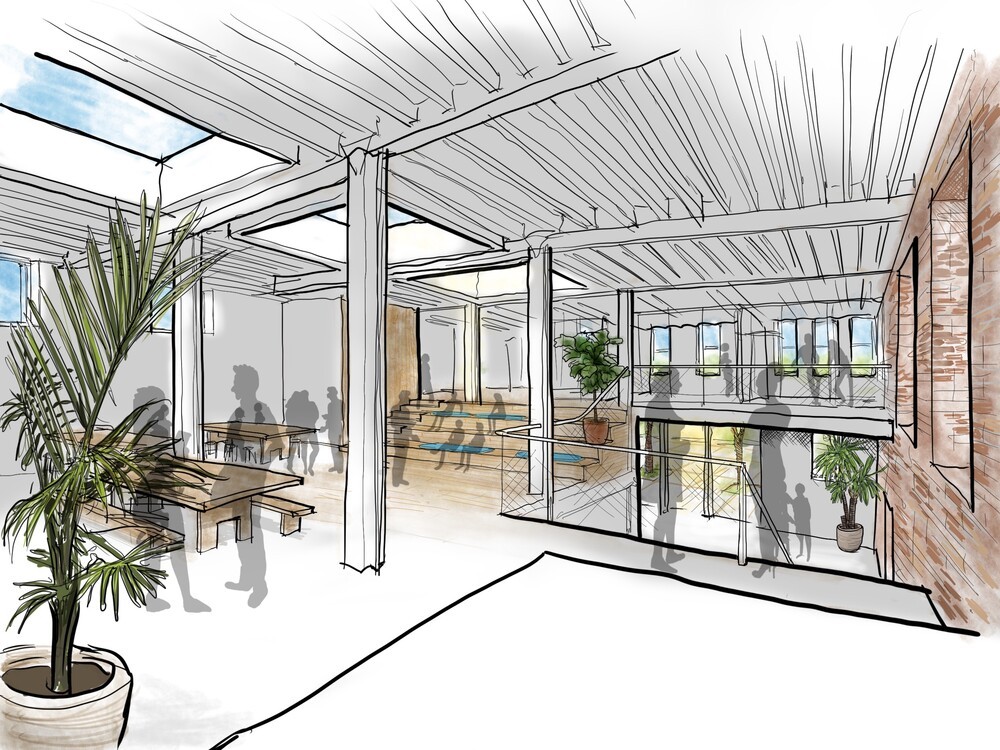Analog Insights: Hand Drawing at Marvel
While the world of architecture gets ever more digital, Paulo Belardi made a compelling argument of why architects should pick up a pencil in the essay Why Architects Still Draw, 2004. With the advent of computer-aided drawing, many were quick to dismiss hand drawing as an anachronism, but by focusing on the sketch, defined by Giacomo Devoto as “a rough draft drawn with essential marks…open to greater development, but able to be considered complete as well.” Belardi explains why the act of freehand drawing, being more immediate and directly linked to our brains, is the quickest and most effective way to convey an idea. For this reason, as Autocad replaced the mayline and mylar, the sketchbook and trace paper survived.
 iPad sketching has become crucial for initial ideation, blending with site photos to explore design and spatial possibilities.
iPad sketching has become crucial for initial ideation, blending with site photos to explore design and spatial possibilities.Now firmly in the second decade of the 21st Century, the emergence of a new generation of drawing software designed for tablets, means sketching has been able to go digital. There are a number of different software to choose from, but regardless of which is used, all are able to perform the key elements that make digital hand drawing such an asset. By exploring Devoto’s definition of a sketch, we can begin to see why digital hand drawing is such a successful tool in an architectural practice. The drawing can begin as a rough draft with essential marks, as a quick and immediate depiction of an idea, but then with the use of color, layers, and image insertion, the possibility for greater development becomes nearly infinite. This allows an initial sketch to become a dazzling rendering or informative diagram.

By incorporating this technological innovation, the ancient practice of drawing with one’s hand has become more relevant to the design process than it has been in the last forty years. Given that it is equally applicable to marking up detail drawings; generating a new back-of-the-napkin concept sketches; or to that one rendering that convinces the client, digital hand-drawing has become an integral design tool once again. In the coming weeks we will look a series of case studies, which will elaborate on the different possibilities and means to achieve them that digital hand-drawing allows.
The first case study, on the Orchard Beach Pavilion Restoration can be found here: Analog Insights Orchard Beach Case Study
